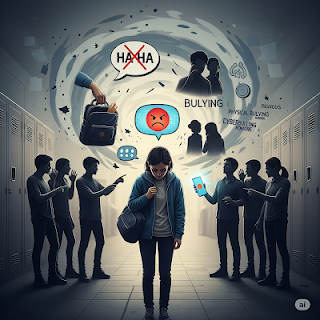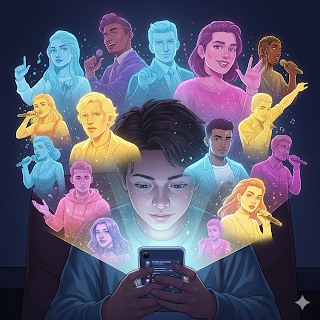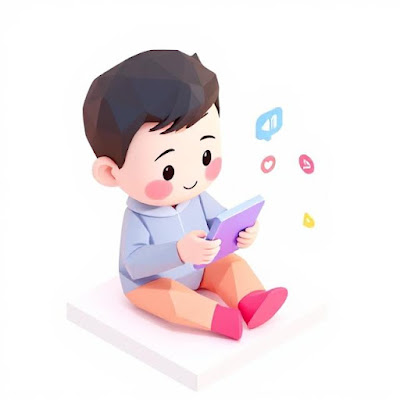Why Bullying Happens? Types, Categories and Effects
Introduction:
Over the years, bullying has remained an unsolved problem. The victims, the torments, the situations, the people around all have some responsibility to some extent for the incidents that happen. The seek to harm and intimidate others does not arise out of the blue. Also, the victims who accept the actions of oppressor don’t do it willingly but over the course of time, various factors are affecting the mindset.
Definition:
According to Anti-Bullying Alliance, bullying is defined as:
“The repetitive, intentional hurting of one person or group by another person or group, where the relationship involves an imbalance of power.”
According to UNICEF:
“A person who bullies intends to cause pain, either through physical harm or hurtful words or behavior, and does so repeatedly.”
UNICEF categorizes that boys are more likely to suffer from physical bullying while girls are more likely to suffer psychological bullying.
According to UNESCO and GCED:
“Bullying is characterized by aggressive behavior that involves unwanted, negative actions and an imbalance of power or strength between the perpetrator or perpetrators and the victim.”
Regardless of the platforms, all the definitions involve one thing in common; desire for power to intimidate others.
Why does this desire to browbeat arise?
⦁ Emotional Insecurity:
Michelle Felder, a therapist states that most bullies follow the phrase “Hurt people hurt others.” They can’t cope up with the traumas they faced and instead of going for healing, they start transmitting their pain to others as a healing mechanism. While it doesn’t provide an excuse for bullies to continue what they do but it offers an insight to how they work.
Related: Parasocial Relationships
⦁ When Victims Become Bullies:
It is a very unhealthy defensive mechanism when victims of bullying start bullying people they see defenseless or innocent. They strike first in order to not being threatened, intimidated and harmed by others. Victims turned bullies never seek it as desire for power but a mere strategy to appear superior so they are not harmed.
⦁ Social Insecurity:
Being in a tier of social statuses, some people deem it their right to belittle every person they meet. Because they are at the top, it becomes a mindset that people of lower social status are a thing they can use it as they will. People of such mindset can’t digest the reputation they are granted by their financial, social, physical and sometimes family backgrounds.
⦁ How Weak Social Skills Lead to Bullying:
Some bullies are found to have poor set of social skills that makes them vulnerable to awkward situations. Not being able to handle them infuriates them to be overly assertive verbally which may then proceeds to physical and psychological harm.
⦁ The “Fitting In” Concept:
For people trying to stand out more in a group, they try to act more authoritative and forceful of norms.
Categories:
While these reasons serve as the base of the an unwanted social behavior, bullying happens in following categories:
⦁ Physical Bullying:
Unfortunately, the worst kind of bullying that may go to extremes is the physical bullying. It includes hitting, kicking, slapping, pushing, beating and may involve the use of weapons to threaten and harm others.
⦁ Verbal Bullying:
It is the most common type of bullying which includes calling names, sending verbal threats and gossiping about others affecting their social and mental status.
⦁ Non-Verbal Bullying:
It includes threatening with hand signs, text messages, causing discomfort by invading personal space, life and affecting their decisions by manipulation.
⦁ Cyber Bullying:
Threatening and disrespecting others over the internet is called online or cyber bullying. It is also referred to as electronic bullying. Embarrassing, humiliating, harassing, sending rude or nude messages, upsetting mental state, spreading rumors, impersonation and tricking others are included. Privacy breaches are also included in it.
Related: Privacy Breaches
⦁ Emotional Bullying:
Emotional bullying includes upsetting others mental health by manipulating, isolating, excluding, mocking, criticizing, scaring, teasing and controlling feelings and emotions. It may include excluding others of social gatherings or interactions.
⦁ Religious Bullying:
It includes bullying and teasing on the basis of religious believes and ideas, worships, spiritual rites and occasions. Mocking others religious activities causes an internal dispute among social members.
⦁ Racial Bullying:
It includes bullying and offensive behavior towards others on the basis of their color, creed, race, background, traditions or ethnicity deliberately excluding them from social activities and diminishing their self respect and social status.
⦁ Sexual Bullying:
Discriminating others on the basis of their gender, appearance, unwanted physical advances, physical harassments, unwanted or inappropriate gestures of sexual nature, making people feel uncomfortable with sexual undertones both in-person or online.
Bullying Culture Around the Globe:
Bullying is not a thing that matters but it is a deliberate choice to act upon. According to an ACER report of 2022, Latvia, Australia and New Zealand have reported the highest reported bullying levels while Korea, Japan and Netherlands have reported lowest bullying rate.
Effects of Bullying:
We already know that bullying is a deliberate act. None of the bullies are ever forced to be bullies but they are slaves to their own selfish thoughts. While victims may carry the trauma in their future life as well which affects their social reputation, academic performances, relationships and mental health.
-
Mental Health Struggles:
Victims of bullying suffer from depression and anxiety that leads to isolation and hopelessness. The lonely attitude accelerates the development of Post Traumatic Stress Disorder (PTSD) where they relive the past memories through flashbacks or nightmares.
-
Academic and Social Impact:
Victims lose interest in social gatherings and hence no fascination in friendships. This may lead to absenteeism in school or some may completely drop out. Victims may withdraw from their families for they might have developed low self-esteem and increased feelings of worthlessness.
-
Physical and Behavioral Issues:
Victims are reported to have developed eating disorders, disturbed sleep patterns and headaches. Some are reported to develop drug addiction as an unhealthy coping mechanism.
Related: Overthinking
-
Long-Term Effects:
Bullying may lead to develop feelings of self-harm more probably in girls. Boys are reported to have an involvement in crimes and violence scenes. Some may permanently develop suicidal thoughts and may try attempting them.
- Example:
A research conducted in China reported that victims of bullying are more liable to Post Traumatic Stress Disorder (PTSD) compared to their peers. So, there is an urgent need to address the situation especially in schools and kids.
Final Thoughts:
Bullying is not just an empty attempt to be invasive but a full prepared and decided attempt to invade and remain in your space.
Victims should not only be targeted for sympathy but should be made to stand against and retaliate any further moves from the torments. Victims must be backed to face reality and must be assisted to resist any future abuse.
Administrations in schools, workplaces, colleges, play arenas and any other should completely accept the fact that bullying may happen at any place, any time, across any age and gender. Nowadays bigger and reputed institutes like militaries and multi-national companies are involved in scandals of bullying. Complete awareness and active responses to cope are essential.
Bullies no matter how beautiful, handsome, innocent faces, rich and highborn they are should never be portrayed as acceptable and tolerable. They should be accounted regardless of who he or she is.
References & Further Reading:
-
Anti-Bullying Alliance – Official definition and resources on school bullying.
-
UNICEF – Bullying: What It Is and How to Stop It.
-
UNESCO (GCED) – Global Citizenship Education resources on bullying and safe schools.
-
World Health Organization (WHO) – Reports on the mental health impact of bullying in children and adolescents.
-
Felder, M. – Therapist insights on the phrase “Hurt people hurt others.”
-
U.S. Department of Health & Human Services – StopBullying.gov information and prevention strategies.










